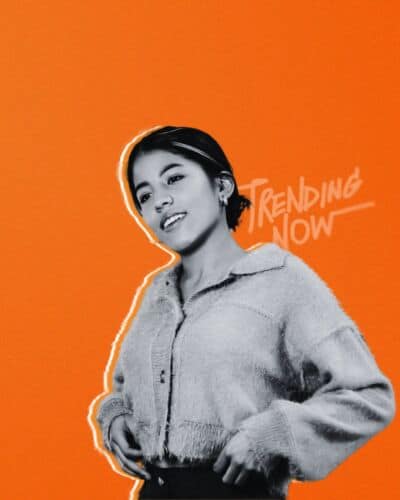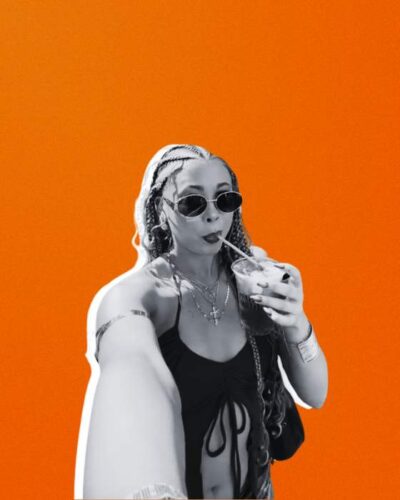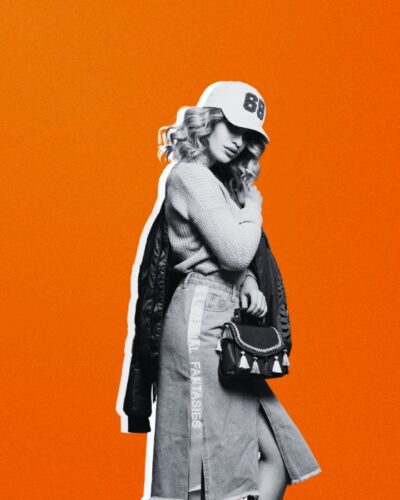TikTok is a platform that both intrigues and baffles brands. The platform has quickly grown in popularity worldwide and caused the likes of Facebook, Instagram and YouTube to attempt to replicate TikTok’s success by rolling out their own short-form video features. Brands have found huge success on the platform, with viral trends helping to drive sales and brand awareness. This was very much the case for skincare company CeraVe and clothing brand Aerie. To learn more about the platform, we sat down with UK TikTok creator, TikTok sounds promotions specializer and previous employee at The Goat Agency, James Essex. We discussed his social media journey with Olivia Duffin, as well as his own experience as an influencer on the platform in order to understand TikTok from the perspective of a creator. So, let’s jump in and learn a bit more about what it’s really like to be an influencer on the platform!
When did you get started building a social presence and what platforms did you start growing a following on first?
James: Both mine and Olivia’s stories on social media are totally different. I’ve been doing social media since I was 14, from posting relatable tweets on Twitter to going on meet and greet tours up and down the country. Twitter and Instagram were the first platforms I gained a following on and then I started releasing music. Olivia, however, blew up overnight from an Ariana Grande video – one day she was an apprentice hairdresser, the next she had a million followers on TikTok.
Was it your intention to become an influencer/creator?
James: Both of us originally did not aim for this, I wanted to be a performer as I grew up my whole life dancing and Olivia wanted to be a hairdresser. So it sort of just happened and then we went with the flow.
Did you always know what type of content you wanted to make, how did you find your voice/vertical niche?
James: I didn’t actually start making TikTok content until I met Olivia. It was the first platform I just didn’t get, like I couldn’t find my content niche that would reach the audience I wanted to. It wasn’t until I got the offer to move to Spain and live full time in a creator house that I was really able to watch other creators and define what content I wanted to make. Olivia blew up off Ariana Grande lookalike content, so she continued to create that until she found her voice in a new area.
What type of content would you say you’re both known for now?
James: We now both make a varied amount of content. A lot of our audience love our couple comedy/prank style videos together, so we have been doing that for some time now. However when we’re alone, Olivia likes to speak on taboo subjects around femininity, with the purpose of normalizing them. On the other hand, I create singing style content alongside my music.
How did you both meet?
James: Funnily enough we both met while I was working at the Goat Agency. I had lined up a collaboration on an upcoming single I was releasing, and the guy dropped out a week before the studio session. Me and Liv had been on and off speaking, so I thought I would ask her to collaborate with me instead. After we made that song, she missed her train and ended up coming back to London with me and pretty much never left!
What drew you both to creating content on TikTok?
James: With Olivia already having 2 million followers on TikTok when I met her, it interested me to learn how that mass amount of people would tune in and watch her videos everyday. Olivia just sort of fell into it when she went viral and has enjoyed it ever since.
What are the different ways creators can make money on TikTok?
James: So in terms of money, TikTok was the best thing that ever happened to me. Before I joined the Goat Agency, I worked remotely booking talent for a few startups in Silicon Valley. Whilst at the Goat Agency, I grew my following up to 75,000+, and started being offered “music based promotions”, where artists would pay Olivia and myself to use certain sounds behind our TikTok videos. This was all in hope that the song went viral. A year later this space has boomed, and I now book with my own agency (JE & Partners) and other partner agencies, over 400 bookings a month for “music” and “app” based campaigns.
Alongside that, Olivia and myself also earn money through the ‘creator fund’. This essentially allows creators to get paid based on the views throughout each month. It has a lot of variables in what they pay us per thousand (CPM), but it’s around £0.02-£0.04. Obviously at that rate you have to generate a huge amount of views. But between us we generate about 30-40 million views a month at the moment, so that’s another income for us. We also get a lot of our projects funded and sponsored, like when we lived in Spain. A brand paid for all our rent and expenses, whilst we created content to promote products.
What benefits does TikTok have over other social platforms?
James: TikTok is all based on virality. Your audience is always changing. Unlike other platforms like YouTube, where you search and subscribe to creators you like, a lot of content is consumed through the ‘For You’ page, which is an algorithmic vertical scrolling page. You can scroll through individually curated selection of videos, based on what videos you engage with most often. Therefore, you’re always reaching a new audience every single video. Your following also doesn’t matter too much, you can have two thousand followers, and if the quality of the content and entertainment value is high, it will be reached by millions. I think that is the most appealing feature of the platform and the reason for TikTok’s quick success in such a competitive space. It means that every user is also a creator and can be just like their favorite influencers.
How does TikTok as a platform support creators?
James: They obviously offer opportunities like the creator fund and the creator marketplace to bring financial opportunities to creators. Alongside that, their support team are very good at monitoring videos and making sure the correct videos are removed when breaching community guidelines. The company itself has already amassed a huge user base, and I think there is much more to come by the way of supporting creators. At the end of the day, the social media landscape is rapidly evolving and every platform has to facilitate opportunities for creators, to keep them from switching to another platform.
Do you think TikTok has longevity as a platform and why?
James: Yes, purely based on how they are growing. Their growth has been incredible and they have much more to show. They have totally changed how content is consumed and engaged with online and had some of the biggest platforms like Instagram and Snapchat recreating this. You know you’re doing something right when huge players are recreating elements of your own platform.
Many people have the perception that TikTok is just a platform with creators dancing, what would you say to people who think this way?
James: Totally wrong, and this is why a lot of people fall behind when it comes to marketing on TikTok. There is so much opportunity to reach every niche, and as the platform has grown, they have started showing this off a lot more.
What is the biggest mistake brands can make on TikTok?
James: The last question – presuming it’s a “dance” platform for young kids. The best and the MAIN thing they need to be doing is LISTENING and WATCHING. What are trends your brand can align with and create content around? Some of the most successful campaigns I’ve been involved in have hardly had any brief at all – they find a trend, they align, and they trust the creators voice and content style to pass on that message authentically.
What makes a good brand partnership in your opinion? (e.g. is it the brands who let creators have a say on the creative etc.)
James: Brands should trust the creators. Provide a baseline brief to follow but allow creativity and ideas. As I said, creators are constantly tuned into the most recent trends, and know what works and what doesn’t. Trying to move outside of this is a risk. Don’t get me wrong, you can end up creating a new trend but the success rate compared to listening and aligning to the trends is just a no brainer.
What factors make a successful TikTok?
James: Nobody is a user, everyone has become a creator. With an ever growing amount of young people wanting to become a “youtuber” and “influencer”, the platform provides an opportunity where everyone is able to create content and follow trends actively. Instead of commenting on their creators doing trends on YouTube, they can recreate their favorite trends in 30 seconds. This is the difference between TikTok and other platforms. On Instagram, you’re encouraged to follow influencers who have unbelievable lives and do amazing things. But on TikTok, you’re encouraged to be a creator, not just a viewer.
You were both part of a creator house at one point – can you talk about this experience? What was the house called, how many people were in it, how did you get chosen?
James: The house was called “The Jet House” and was based on UK creators jetting out to a beautiful hot country (Spain) and creating content, very similar to most of the storylines of some of the most popular reality TV Shows. We had an agency back in the UK sorting us out with sponsorships to pay our rent and expenses, and we’re just 24/7 creating content.
It was a pretty crazy experience to be fair. We actually ended up on the Spanish television networks and on the news, and we were even on the Spanish Cosmopolitan website. 10 of us lived together at the beginning from magicians, to dancers, to actors, to couples – we had many niches that we were connecting together to grow our own personal brands. We were actually offered another creator house back in London and funnily enough we jumped on a call with the organizer of the Spanish house, thinking it was based in London. Then when he dropped the bombshell saying it was in Spain, we’d already packed before the call had ended. It ran like a normal workspace – we had morning meetings Monday to Saturday and were expected to make a certain amount of content every day.
What are the benefits of creator houses?
James: You get to trial out lots of different types of content and ideas that you wouldn’t normally. We were constantly around each other and spent a lot of time thinking of ideas for all 10 of us, helping us to all come up with creative content day in and day out.
You’ve recently started a YouTube channel – what made you want to build a presence on this platform?
James: We’re playing around with different platforms at the moment. We want people to focus on our relationship and follow our journeys as young people – our learnings, our fights, our best memories and to be able to watch us grow together. Long form content is the best for this, so we’re currently in the process of learning the best way to transfer our audience from our short form content to long.
What does the future look like and what are you most looking forward to?
James: We’re expanding into a lot of spaces. A lot of business ventures yet to be launched that align to what we currently do, but monetising them further. We want to make more music together plus I have some solo work launching this summer and finally we want to make A LOT more content on all platforms, so we always have stuff in the works. All I can say is watch this space!




